Abstract
The thermal balance of 13 term infants was measured in a closed-circuit metabolism chamber. Each was studied naked, then with a gamgee-lined hat, and finally with a 'cummerbund' made of a similar material and of similar dimensions. At 27 degrees C the oxygen consumption of the 'hatted' babies was only 85% and the total heat loss 75% of the values measured with the infants naked. The cummerbund offered no detectable benefit. An additional 10 infants were studied while wearing a tubegauze hat at environmental temperatures of 28.5 (+/- 0.5) degrees C. This type of hat gave no measurable thermal protection. It is concluded that a substantial reduction of thermal stress in adverse environments can be achieved simply and clearly by adequately covering the vault of the skull.
Full text
PDF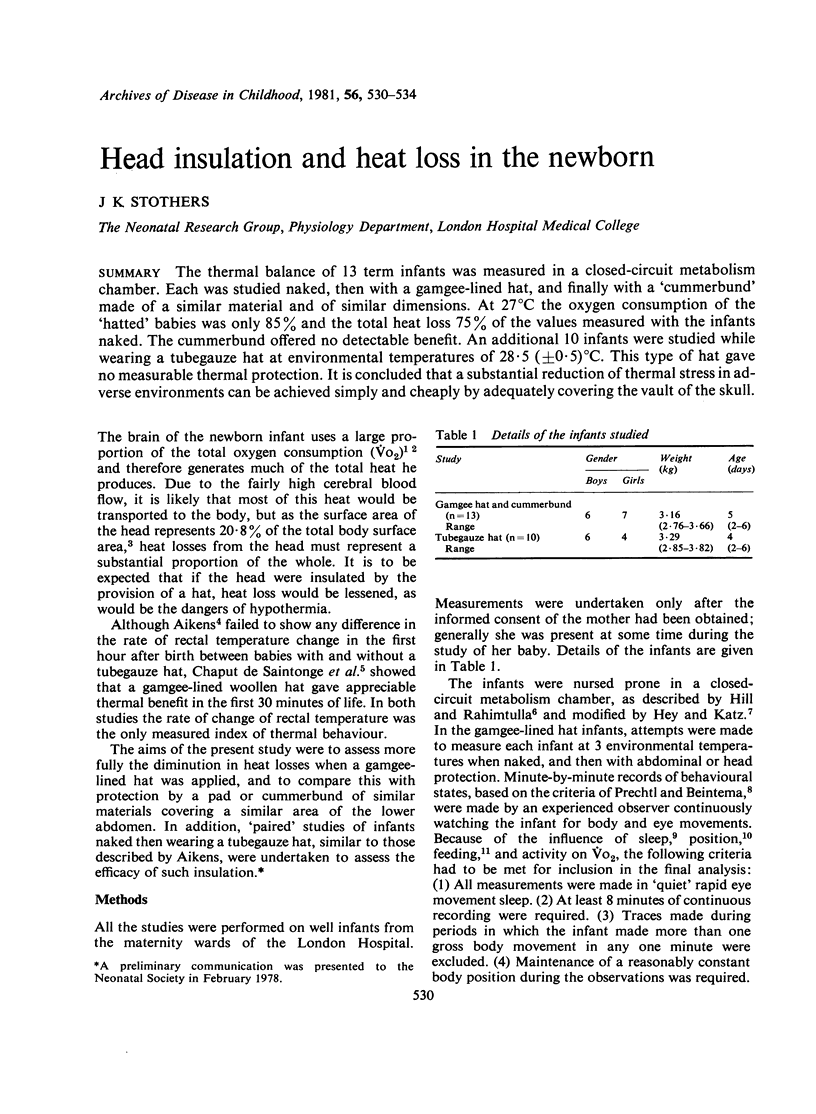
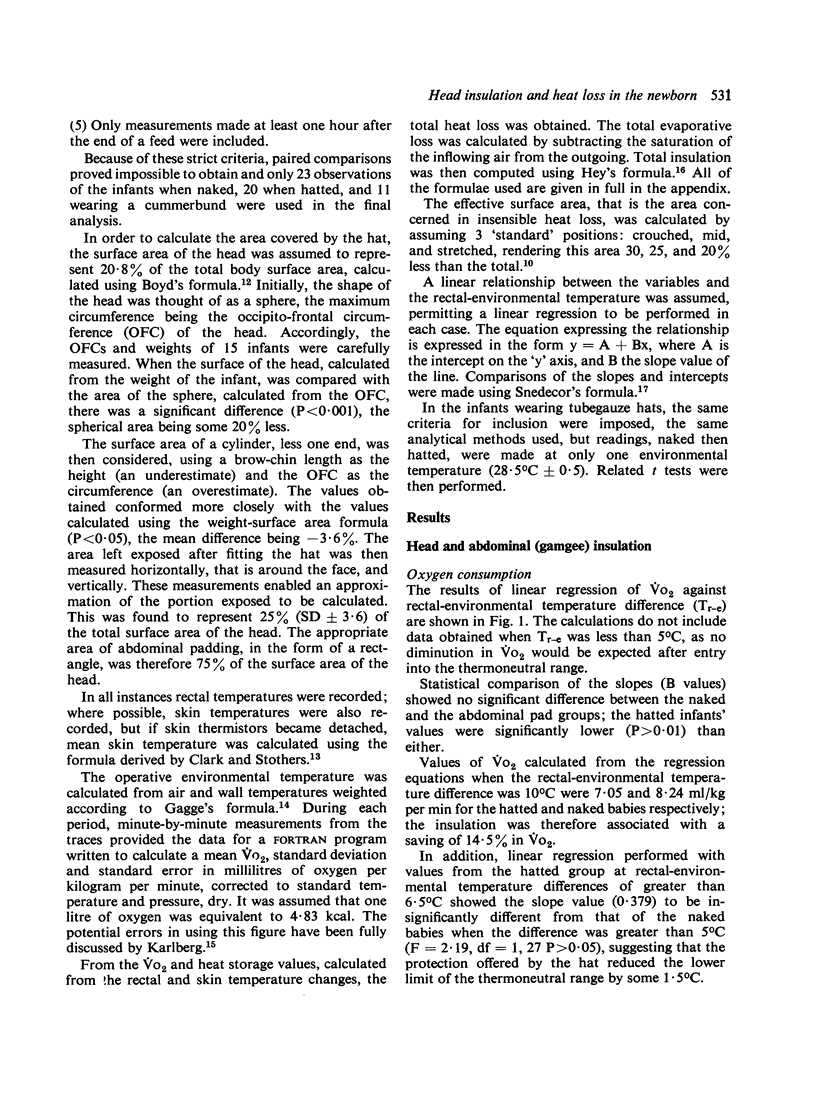
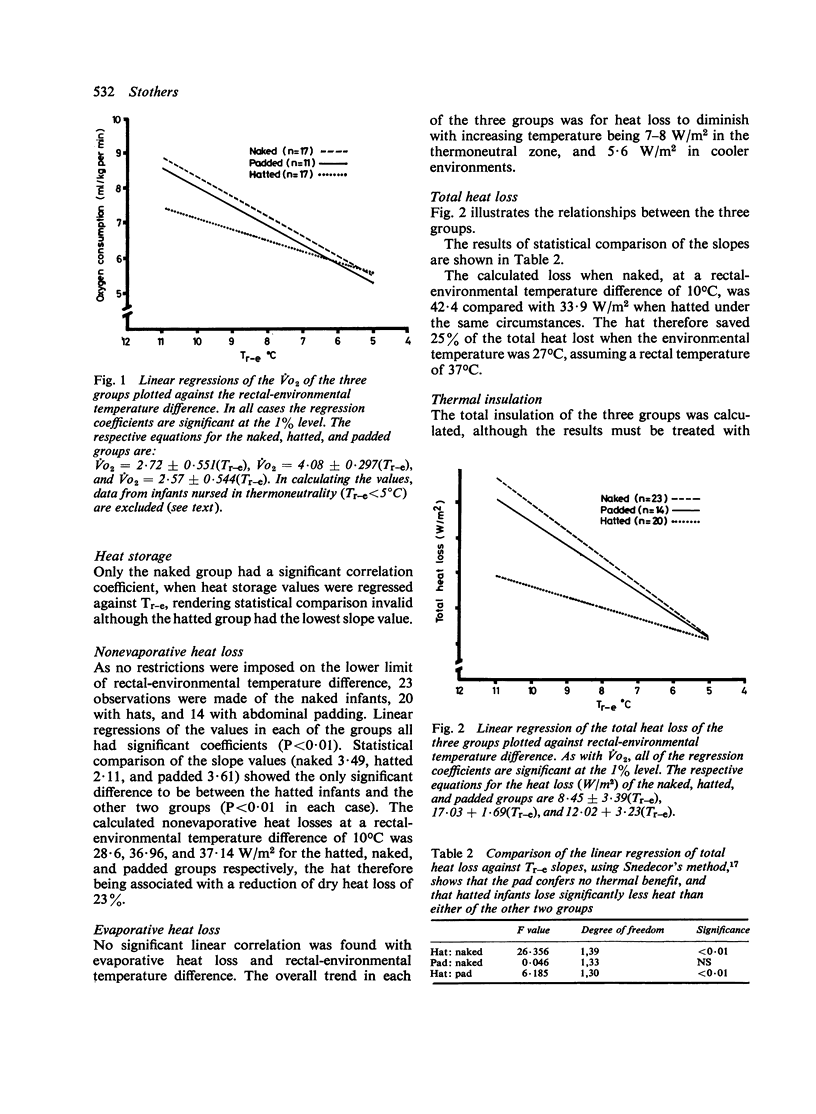
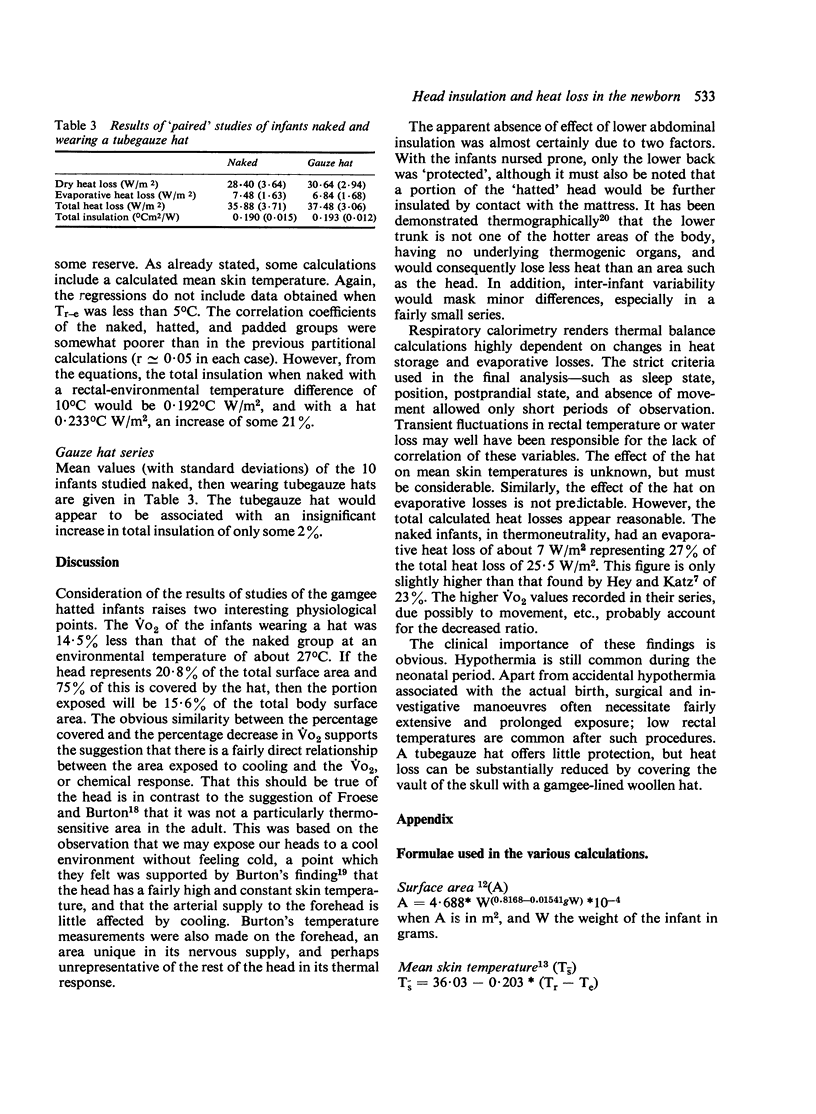
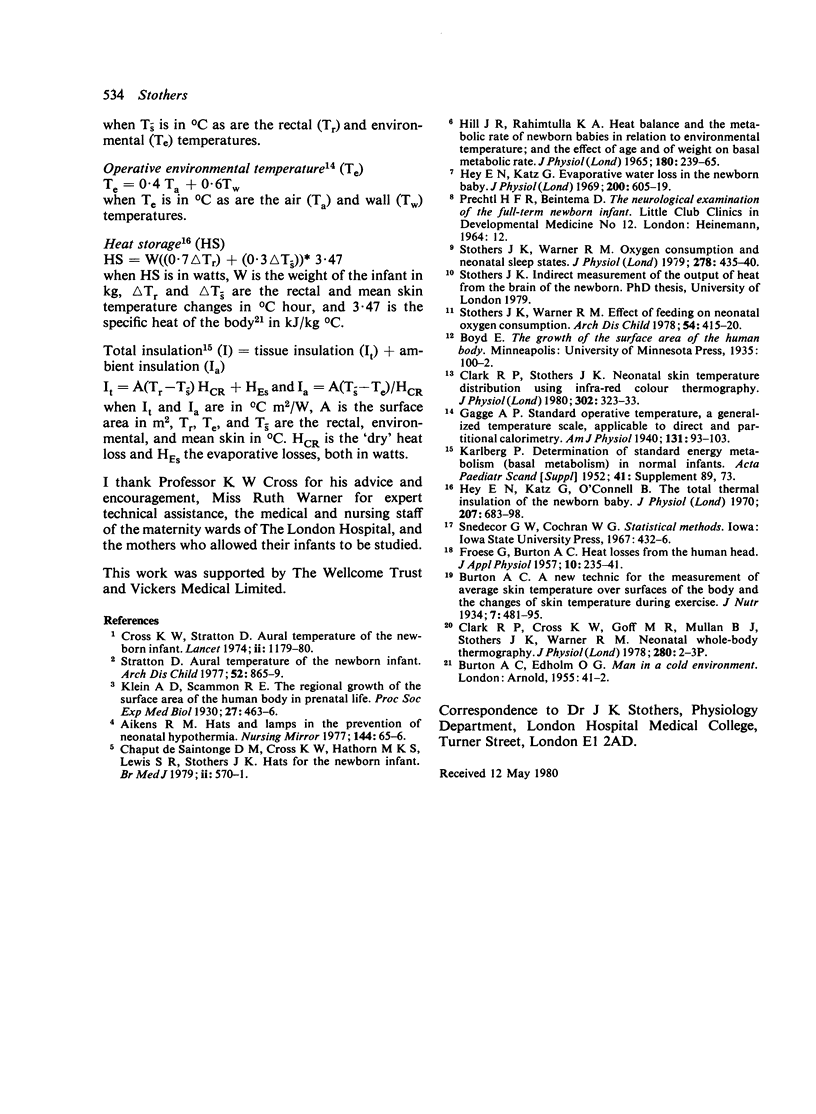
Selected References
These references are in PubMed. This may not be the complete list of references from this article.
- Aikens R. M. Hats and lamps in the prevention of neonatal hypothermia. Nurs Mirror Midwives J. 1977 Apr 21;144(16):65–66. [PubMed] [Google Scholar]
- Chaput de Saintonge D. M., Cross K. W., Shathorn M. K., Lewis S. R., Stothers J. K. Hats for the newborn infant. Br Med J. 1979 Sep 8;2(6190):570–571. doi: 10.1136/bmj.2.6190.570. [DOI] [PMC free article] [PubMed] [Google Scholar]
- Clark R. P., Stothers J. K. Neonatal skin temperature distribution using infra-red colour thermography. J Physiol. 1980 May;302:323–333. doi: 10.1113/jphysiol.1980.sp013245. [DOI] [PMC free article] [PubMed] [Google Scholar]
- Cross K. W., Stratton D. Aural temperature of the newborn infant. Lancet. 1974 Nov 16;2(7890):1179–1180. doi: 10.1016/s0140-6736(74)90816-2. [DOI] [PubMed] [Google Scholar]
- FROESE G., BURTON A. C. Heat losses from the human head. J Appl Physiol. 1957 Mar;10(2):235–241. doi: 10.1152/jappl.1957.10.2.235. [DOI] [PubMed] [Google Scholar]
- Hey E. N., Katz G. Evaporative water loss in the new-born baby. J Physiol. 1969 Feb;200(3):605–619. doi: 10.1113/jphysiol.1969.sp008711. [DOI] [PMC free article] [PubMed] [Google Scholar]
- Hey E. N., Katz G., O'Connell B. The total thermal insulation of the new-born baby. J Physiol. 1970 May;207(3):683–698. doi: 10.1113/jphysiol.1970.sp009088. [DOI] [PMC free article] [PubMed] [Google Scholar]
- Hill J. R., Rahimtulla K. A. Heat balance and the metabolic rate of new-born babies in relation to environmental temperature; and the effect of age and of weight on basal metabolic rate. J Physiol. 1965 Sep;180(2):239–265. doi: 10.1113/jphysiol.1965.sp007701. [DOI] [PMC free article] [PubMed] [Google Scholar]
- Stothers J. K., Warner R. M. Effect of feeding on neonatal oxygen consumption. Arch Dis Child. 1979 Jun;54(6):415–420. doi: 10.1136/adc.54.6.415. [DOI] [PMC free article] [PubMed] [Google Scholar]
- Stothers J. K., Warner R. M. Oxygen consumption and neonatal sleep states. J Physiol. 1978 May;278:435–440. doi: 10.1113/jphysiol.1978.sp012314. [DOI] [PMC free article] [PubMed] [Google Scholar]
- Stratton D. Aural temperature of the newborn infant. Arch Dis Child. 1977 Nov;52(11):865–869. doi: 10.1136/adc.52.11.865. [DOI] [PMC free article] [PubMed] [Google Scholar]


